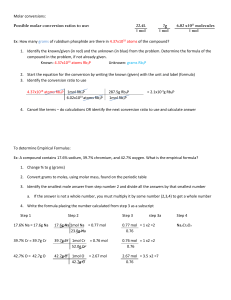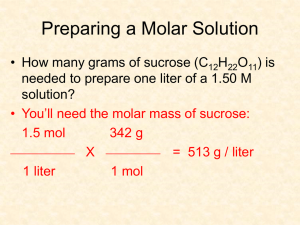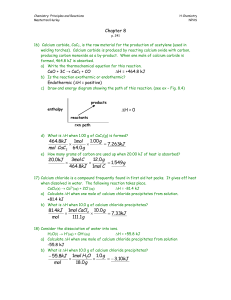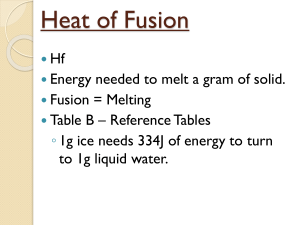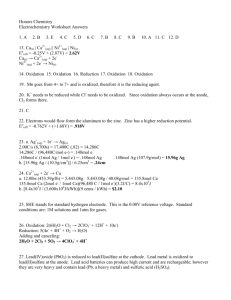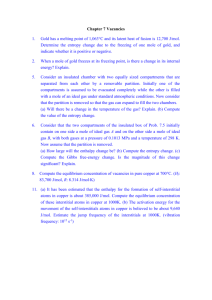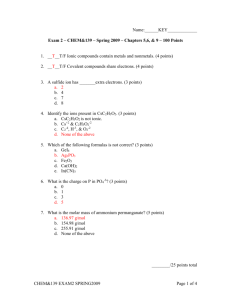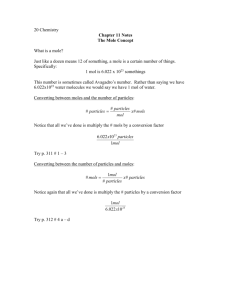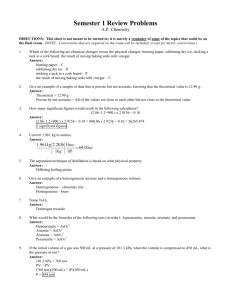Ch 6 p. 174 #2(a,b) & #8
advertisement
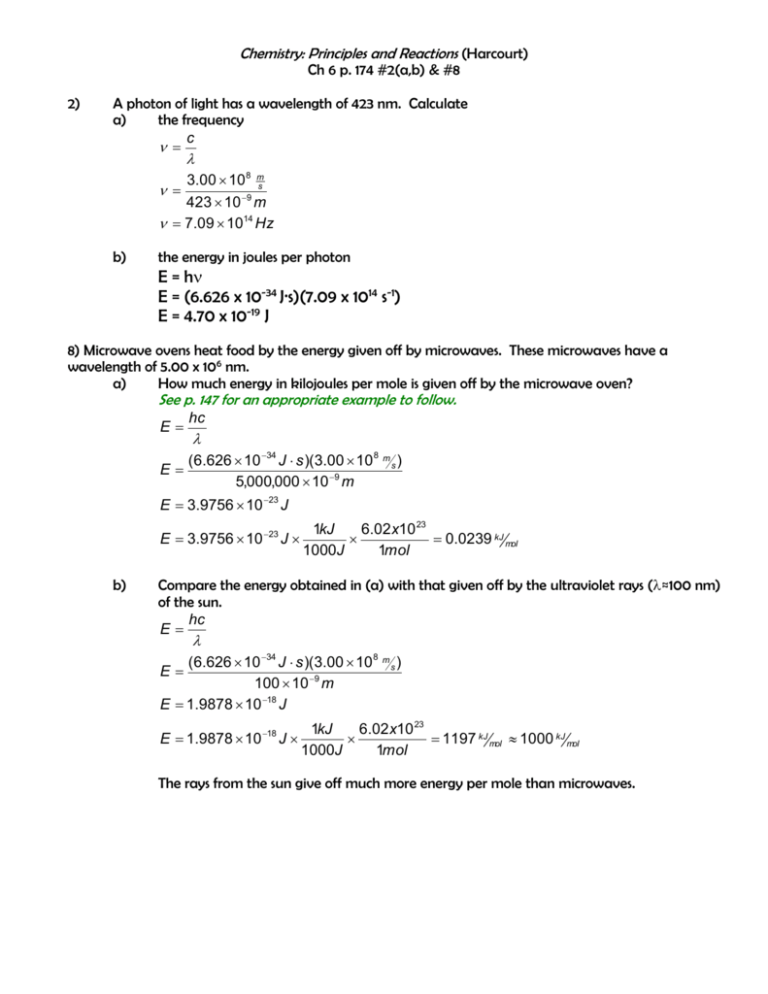
Chemistry: Principles and Reactions (Harcourt) Ch 6 p. 174 #2(a,b) & #8 2) A photon of light has a wavelength of 423 nm. Calculate a) the frequency c 3.00 10 8 ms 423 10 9 m 7.09 1014 Hz b) the energy in joules per photon E = h E = (6.626 x 10-34 J·s)(7.09 x 1014 s-1) E = 4.70 x 10-19 J 8) Microwave ovens heat food by the energy given off by microwaves. These microwaves have a wavelength of 5.00 x 106 nm. a) How much energy in kilojoules per mole is given off by the microwave oven? See p. 147 for an appropriate example to follow. E E hc (6.626 10 34 J s )(3.00 10 8 m s ) 5,000,000 10 9 m E 3.9756 10 23 J E 3.9756 10 23 J b) 1kJ 6.02 x10 23 0.0239 kJ mol 1000J 1mol Compare the energy obtained in (a) with that given off by the ultraviolet rays (≈100 nm) of the sun. hc E (6.626 10 34 J s )(3.00 10 8 m s ) 100 10 9 m E 1.9878 10 18 J E E 1.9878 10 18 1kJ 6.02 x10 23 J 1197 kJ mol 1000 kJ mol 1000J 1mol The rays from the sun give off much more energy per mole than microwaves.

